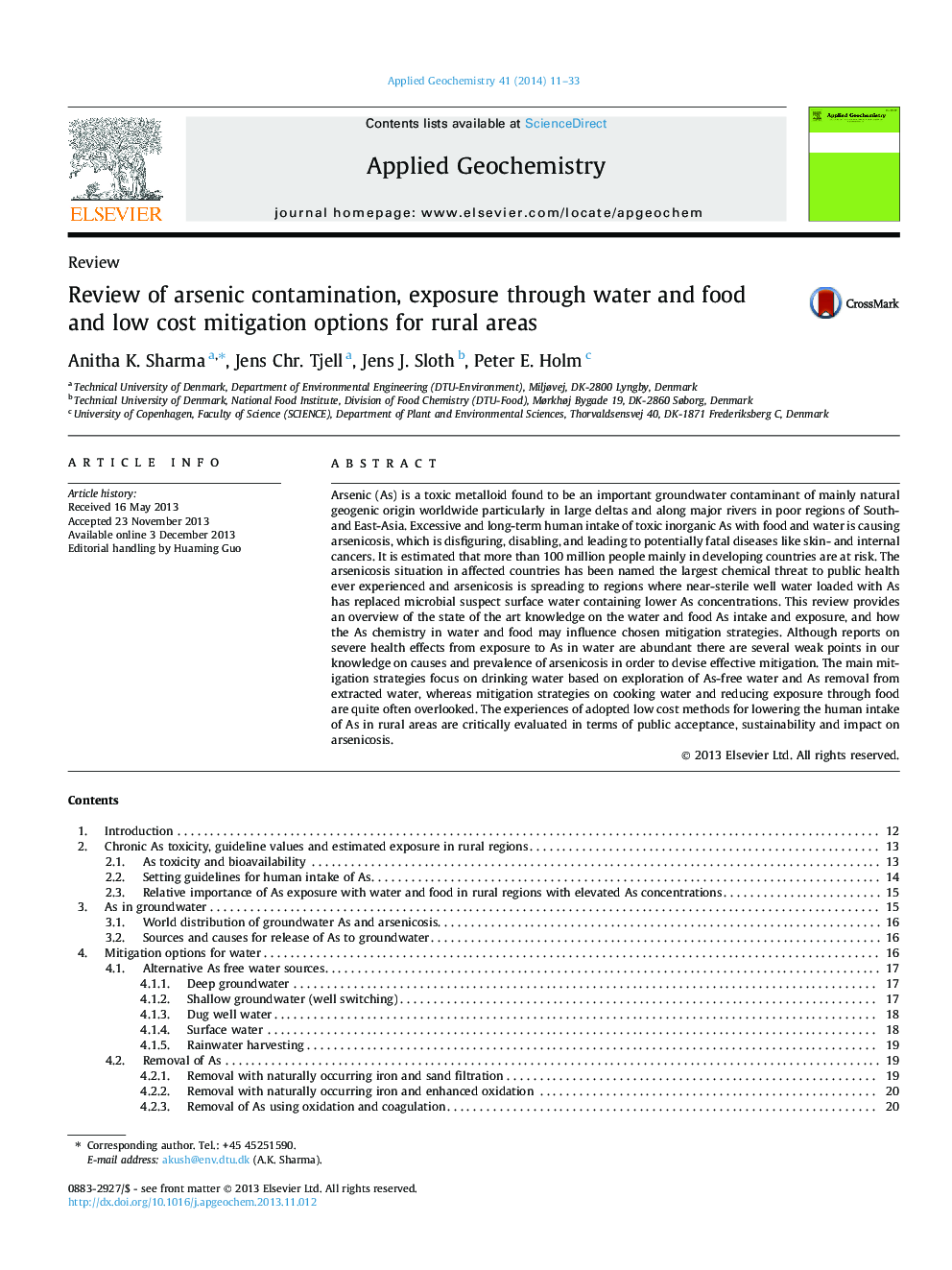| کد مقاله | کد نشریه | سال انتشار | مقاله انگلیسی | نسخه تمام متن |
|---|---|---|---|---|
| 4435862 | 1620250 | 2014 | 23 صفحه PDF | دانلود رایگان |
• Major human arsenic exposure routes are drinking- and cooking water, and food (rice).
• Iron and phosphate are important in biogeochemical processes and in mitigation.
• Loweing human arsenic intake should involve the soil-plant-food chain.
• Low cost As removal technologies still need improvements.
• Instruction and enforcement of proper guideline values reduce human exposure to arsenic.
Arsenic (As) is a toxic metalloid found to be an important groundwater contaminant of mainly natural geogenic origin worldwide particularly in large deltas and along major rivers in poor regions of South- and East-Asia. Excessive and long-term human intake of toxic inorganic As with food and water is causing arsenicosis, which is disfiguring, disabling, and leading to potentially fatal diseases like skin- and internal cancers. It is estimated that more than 100 million people mainly in developing countries are at risk. The arsenicosis situation in affected countries has been named the largest chemical threat to public health ever experienced and arsenicosis is spreading to regions where near-sterile well water loaded with As has replaced microbial suspect surface water containing lower As concentrations. This review provides an overview of the state of the art knowledge on the water and food As intake and exposure, and how the As chemistry in water and food may influence chosen mitigation strategies. Although reports on severe health effects from exposure to As in water are abundant there are several weak points in our knowledge on causes and prevalence of arsenicosis in order to devise effective mitigation. The main mitigation strategies focus on drinking water based on exploration of As-free water and As removal from extracted water, whereas mitigation strategies on cooking water and reducing exposure through food are quite often overlooked. The experiences of adopted low cost methods for lowering the human intake of As in rural areas are critically evaluated in terms of public acceptance, sustainability and impact on arsenicosis.
Journal: Applied Geochemistry - Volume 41, February 2014, Pages 11–33
